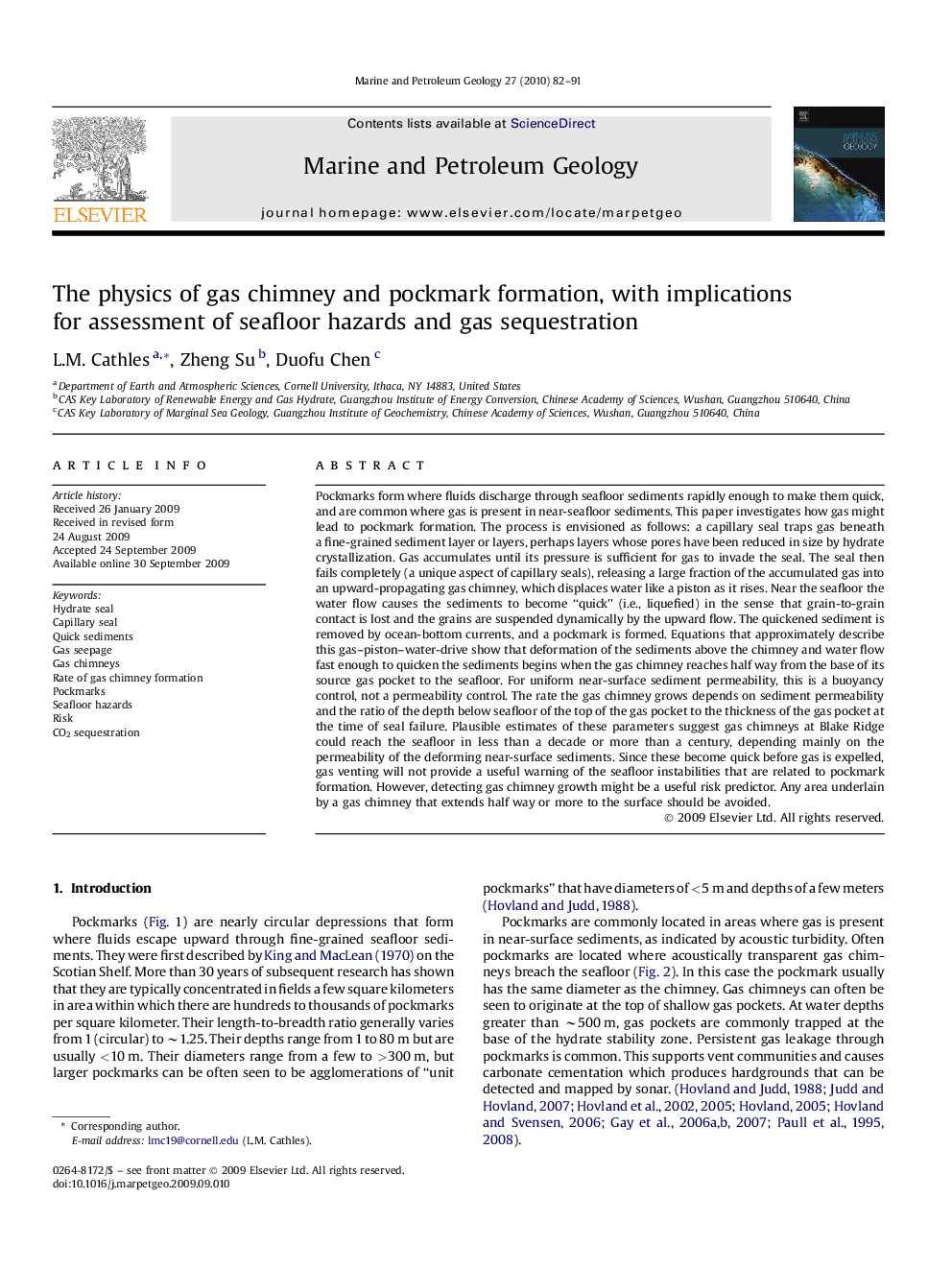| کد مقاله | کد نشریه | سال انتشار | مقاله انگلیسی | نسخه تمام متن |
|---|---|---|---|---|
| 4696241 | 1351663 | 2010 | 10 صفحه PDF | دانلود رایگان |

Pockmarks form where fluids discharge through seafloor sediments rapidly enough to make them quick, and are common where gas is present in near-seafloor sediments. This paper investigates how gas might lead to pockmark formation. The process is envisioned as follows: a capillary seal traps gas beneath a fine-grained sediment layer or layers, perhaps layers whose pores have been reduced in size by hydrate crystallization. Gas accumulates until its pressure is sufficient for gas to invade the seal. The seal then fails completely (a unique aspect of capillary seals), releasing a large fraction of the accumulated gas into an upward-propagating gas chimney, which displaces water like a piston as it rises. Near the seafloor the water flow causes the sediments to become “quick” (i.e., liquefied) in the sense that grain-to-grain contact is lost and the grains are suspended dynamically by the upward flow. The quickened sediment is removed by ocean-bottom currents, and a pockmark is formed. Equations that approximately describe this gas–piston–water-drive show that deformation of the sediments above the chimney and water flow fast enough to quicken the sediments begins when the gas chimney reaches half way from the base of its source gas pocket to the seafloor. For uniform near-surface sediment permeability, this is a buoyancy control, not a permeability control. The rate the gas chimney grows depends on sediment permeability and the ratio of the depth below seafloor of the top of the gas pocket to the thickness of the gas pocket at the time of seal failure. Plausible estimates of these parameters suggest gas chimneys at Blake Ridge could reach the seafloor in less than a decade or more than a century, depending mainly on the permeability of the deforming near-surface sediments. Since these become quick before gas is expelled, gas venting will not provide a useful warning of the seafloor instabilities that are related to pockmark formation. However, detecting gas chimney growth might be a useful risk predictor. Any area underlain by a gas chimney that extends half way or more to the surface should be avoided.
Journal: Marine and Petroleum Geology - Volume 27, Issue 1, January 2010, Pages 82–91